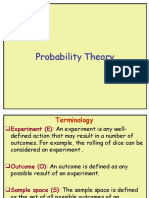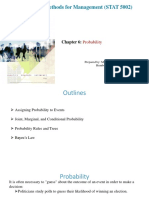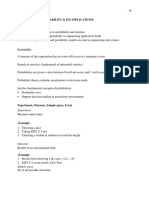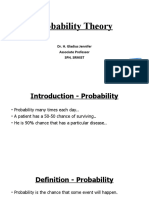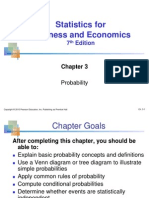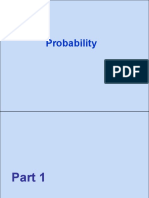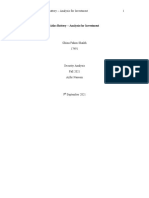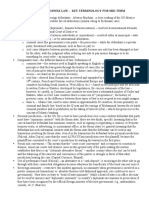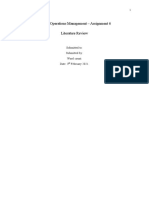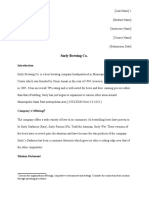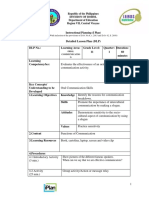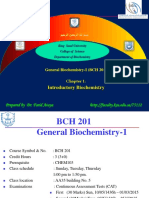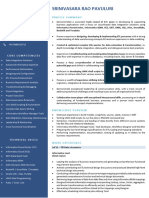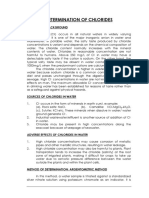0% found this document useful (0 votes)
21 views9 pagesClass 2 - 27th August 2024 - Probability
The document covers fundamental concepts of probability, including notation, terminology, and various rules such as the complement rule, mutually exclusive events, and conditional probability. It also discusses approaches to probability, joint and marginal probabilities, and Bayes' theorem, providing examples for clarity. Overall, it serves as a comprehensive guide to understanding probability through practical applications and theoretical principles.
Uploaded by
Ghina ShaikhCopyright
© © All Rights Reserved
We take content rights seriously. If you suspect this is your content, claim it here.
Available Formats
Download as DOCX, PDF, TXT or read online on Scribd
0% found this document useful (0 votes)
21 views9 pagesClass 2 - 27th August 2024 - Probability
The document covers fundamental concepts of probability, including notation, terminology, and various rules such as the complement rule, mutually exclusive events, and conditional probability. It also discusses approaches to probability, joint and marginal probabilities, and Bayes' theorem, providing examples for clarity. Overall, it serves as a comprehensive guide to understanding probability through practical applications and theoretical principles.
Uploaded by
Ghina ShaikhCopyright
© © All Rights Reserved
We take content rights seriously. If you suspect this is your content, claim it here.
Available Formats
Download as DOCX, PDF, TXT or read online on Scribd
/ 9







